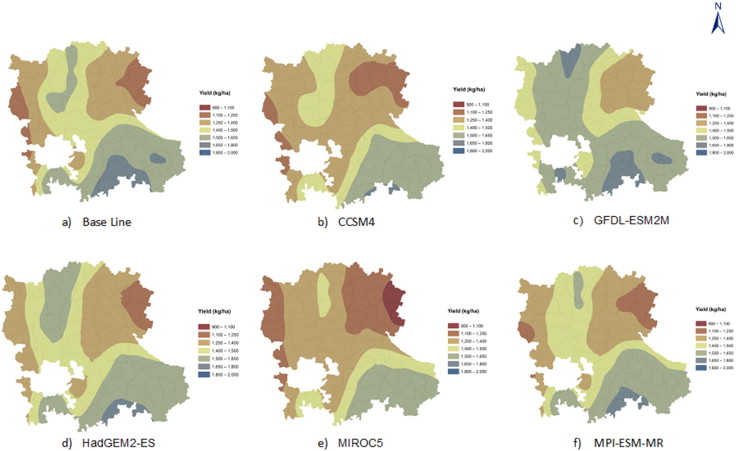Agronomic Decision Making in the Face of Climate Change
Aug 9, 2015
By: Jenna Famular
A recent article “An integrated crop model and GIS decision support system for assisting agronomic decision making under climate change” published in Science of the Total Environment applied AgMIP regional integrative assessment tools to study the spatial yield variations in groundnut yields. The study aimed to quantify spatial variability in groundnut yields under current climate scenarios and future climate scenarios affected by climate change in India. Another goal of the study was to provide strategies of cultivar, water and fertilizer application that can enhance production as well as possible strategies for reducing investment inputs in groundnut production in climate change conditions.
Groundnut is an important oilseed and food crop grown by small farmers in India. Erratic rainfall distribution has resulted in unpredictable yields of this important crop, and climate change can further exacerbate the unpredictability of yields. Using the projected climate change scenarios from the IPCC Fifth Assessment Report and previous climate data, crop model simulations were conducted. The simulations were conducted with varying climate conditions, management options and cultivars to determine the best possible options.

Photo: Drought tolerant groundnut yields under various GCMs for RCP 8.5. Attributed to Kadiyala et al. “An integrated crop model and GIS decision support system for assisting agronomic decision making under climate change.”
The simulations observed that rainfall will increase throughout the region of study and that crop season temperature will increase. The areas with higher rainfall appear to have higher groundnut yields. Management strategies were more effective in some locations than others and the cultivar variation did not have a significant impact on yields. The vulnerability of the region to climate change varied across the region with some areas benefiting and others being vulnerable. Cultivars with drought tolerance had significant yield increases across the region, as did supplemental irrigation.
The study used climate models, AgMIP regional integrative assessment tools, past and projected climate data and various adaptation strategies to create a decision tool that could be used for crop assessments. Projects such as this enable policymakers and stakeholders to make better decisions for increasing crop yields to reduce vulnerability of a region to climate change impacts.
To read the complete article please click here.
